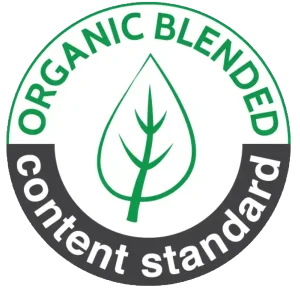In the fashion industry, washed fabric is no stranger and has become a top choice due to its high aesthetic and functional value. From the enzyme wash technique to the stone wash, each method brings unique effects to a product. In this article, we will explore in detail the production process, common washing techniques, and their benefits.
1. What is Washed Fabric?
Nội dung tóm tắt
ToggleIt is a type of fabric that has been specially treated to enhance its aesthetic appeal, softness, and durability. The washing process helps create unique color and surface effects, giving the product a natural, soft, and comfortable feel against the skin.
2. Benefits of Washed Fabric in Fashion
Fashion products made from washed fabric are not only beautiful but also comfortable. The process helps reduce shrinkage and ensures long-lasting color, giving consumers peace of mind. Additionally, washed fabric provides a personalized, stylish look that is difficult to achieve with untreated fabric.
3. Common Washing Techniques

3.1. What is an Enzyme Wash?
It is a technique that uses natural enzymes to soften and smooth the fabric surface, preventing pilling and providing a natural, soft feel.
Pros:
- Creates a soft, smooth, and skin-friendly feel.
- Colorfast and non-irritating.
- Environmentally friendly.
3.2. Stone Wash
It is a technique that uses stones to abrade the fabric’s surface, creating a rugged, edgy, and vintage-style appearance.
Pros:
- Delivers a unique vintage look.
- Suitable for jeans and streetwear.
- Enhances aesthetic appeal and a rebellious style.
3.3. Acid Wash
It is a technique that combines chemicals with stones to create unique, splotchy color patterns on the fabric, often favored in grunge and punk fashion styles.
Pros:
- Creates distinct color effects.
- Suitable for bold fashion styles.
- Adds an artistic touch to the product.
3.4. Sand Wash
It is a technique that uses fine sand to lightly abrade the fabric’s surface, making it soft, shiny, and giving it a luxurious appearance.
Pros:
- Creates a soft, gentle feel.
- Suitable for high-end fabrics like silk and satin.
- Adds elegance and class to the garment.
3.5. Vintage Wash
It is a method of creating a classic, aged effect on the product without affecting the fabric’s durability.
Pros:
- Creates a classic, nostalgic style.
- Suitable for jackets and jeans.
- Provides a unique and impressive look.
4. The Washed Fabric Production Process

4.1. Fabric Preparation Before Washing
Before washing, the fabric is thoroughly inspected to ensure there are no flaws or damage. This step helps optimize the efficiency of the process and ensures consistent results.
4.2. Selecting the Right Wash Method
Based on the product’s requirements, the manufacturer will choose a washing method such as enzyme wash, stone wash, or acid wash to achieve the desired effect.
4.3. Washing the Fabric
During the wash, the fabric is treated with specialized chemicals or materials like stones or enzymes. This process creates the special effects for the product.
4.4. Rinsing and Drying the Fabric
After the wash, the fabric is thoroughly rinsed to remove any leftover chemicals. The fabric is then air-dried or machine-dried to achieve optimal softness and colorfastness.
4.5. Quality Control and Finishing
The product undergoes a final inspection for quality, color, and softness before being released to the market.
5. Applications of Washed Fabric in Fashion
5.1. Washed Fabric for Jeans
Jeans are the most prominent product that fully utilizes washing techniques. From stone wash to acid wash, each technique creates a distinct style, from rugged to classic, for jeans.
5.2. Washed Fabric for T-shirts
Washed fabric for T-shirts not only provides a soft feel but also ensures long-lasting color and is skin-friendly. Enzyme wash styles make T-shirts ideal for daily wear.
5.3. Washed Fabric for Sportswear
Washed fabric for sportswear helps increase durability and reduce shrinkage after washing. With its soft and breathable properties, washed fabric is a perfect choice for sportswear.
6. Notes on Using and Caring for Washed Fabric
- Avoid Strong Washing: Wash gently to maintain the fabric’s softness and color.
- Dry in a Cool Place: Avoid direct sunlight to prevent fading.
- Limit Strong Detergents: Strong detergents can damage the fabric’s structure and cause it to lose its softness.
7. The Washing Process at VieTextile
VieTextile specializes in providing on-demand washed fabric treatment with modern technology and a team of experienced technicians. We are committed to customer satisfaction with our quality washed fabric products. If you need advice on the washing process or are looking for solutions for your fashion products, please contact us for the best support.
8. FAQs
1. What is special about washed fabric compared to regular fabric? Washed fabric is softer, more colorfast, and has a stylish appearance, making it suitable for both everyday wear and high-end fashion.
2. What is an enzyme wash, and what are its benefits? It is a method that uses natural enzymes to soften the fabric, preventing pilling and making it safe for the skin.
3. Is washed fabric durable? It is very durable and shrinks less after washing, ensuring the product maintains its shape for a long time.
4. Does VieTextile offer custom washing services? Yes, VieTextile provides custom washing services with a modern and professional process to create products of the highest quality.
5. What styles are suitable for washed fabric?Washed fabric is suitable for many styles, from classic to modern, especially in products like jeans, T-shirts, and sportswear.










